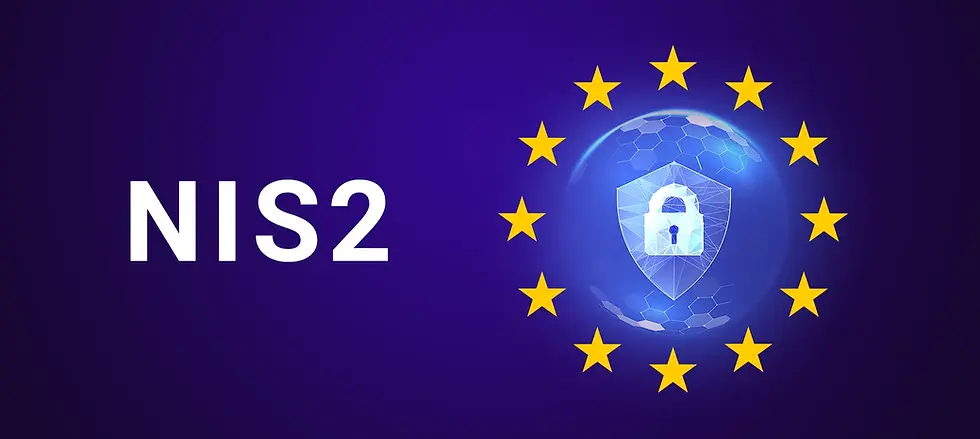The CISO Playbook: 6 Proven Tips to Lead Cybersecurity with Confidence
- Efrem Borg
- Apr 24
- 3 min read
Updated: May 15
In today’s dynamic and increasingly complex digital environment, the role of the Information Security leader is more critical than ever. From emerging threats and regulatory pressure to business transformation and board expectations, the modern CISO (or equivalent security leader) wears many hats.
Having spent over a decade in the trenches – from building national strategies and transforming security functions, establishing Security Operation functions to advising businesses of all sizes – I’ve distilled six practical tips that every security leader can apply to stay effective, credible, and strategic.
1. Start by understanding what you already have
Before setting new goals or launching fresh initiatives, take time to analyse existing work. Many organisations have valuable, underutilised insights from past efforts: identification of critical digital assets, cybersecurity-related risk register entries, security audits, previous incidents, incident simulations, and lessons learned from IT/IS projects. These are foundational. Use them.
Practical tip: Conduct a short review sprint with key stakeholders. Map out what’s been done, what’s working, what’s outdated, and where the gaps are. This builds credibility and avoids reinventing the wheel.
2. Focus on the business, not the firewall
Too often, security strategies are built around technologies instead of business priorities. The most impactful CISOs embed themselves in the organisation’s strategy, understand how the business makes money, and speak the language of risk and resilience – not just controls and compliance.
Practical tip: Ask your executive team, “What are the top 3 risks keeping you up at night?” Then map your security programme to support those concerns.
3. Don’t chase perfection – reduce the right risk
Perfection in cybersecurity is a myth. There's no such thing as 100% secure – and that’s okay. Your job is to identify the most relevant threats, prioritise efforts that reduce business risk, and make pragmatic decisions about investment and mitigation.
Practical tip: Use a risk-based framework like ISO 27005 or NIST CSF to communicate trade-offs and investment needs to senior stakeholders.
4. Build allies, not just policies
Security is not the job of a single department. It’s a shared responsibility across the organisation. The best security leaders build strong relationships with IT, HR, legal, operations, and marketing – not just audit and compliance. Moreover you need to understand that you cannot make it alone, you need key partners traversing the journey with you, who bring to the table depth in specialised fields of InfoSec.
Practical tip: Create a Security Champions programme with representatives from different departments. Give them a voice, listen to their constraints, and co-create practical security practices that work for their context.
5. Focus on culture, not just controls
Security awareness programmes are important, but culture eats awareness for breakfast. A healthy security culture is one where employees feel responsible for security, are encouraged to speak up, and are not afraid of making mistakes.
Practical tip: Instead of just sending phishing simulations, celebrate people who report suspicious emails, and turn incidents into learning opportunities rather than blame games.
6. Keep learning – and help others grow
The security landscape evolves daily. As a leader, it’s critical to stay updated – but also to grow your team’s capabilities and confidence. Invest in training, mentoring, and career progression. A strong team is your best defence.
Practical tip: Have regular 1:1s with your team to understand their goals and development needs. Sponsor attendance at conferences or support certifications where relevant. Build relationships with your key Cyber Security Partners, have a coffee, grab a lunch, attend that conference - network, network, network.
Final Thoughts
Leadership in cybersecurity isn’t just about managing threats – it’s about enabling the business to thrive securely. As an information security leader, your impact is felt far beyond technical systems. It's in the trust you build, the risks you manage, and the culture you shape.
Join the Conversation
We’d love to hear your thoughts — how have you deviced your leading strategy? What’s worked well for you, and where are the challenges? Share your experiences in the comments below or connect with us directly.
For more insights on cybersecurity leadership and digital resilience, explore our blog at unDisrupted.net, or follow us on LinkedIn. 📖 You might also find value in our recent article, NIS2 in Malta: Strengthening Cybersecurity for Maltese Entities, which explains how our assessments support long-term compliance and operational confidence.
At unDisrupted, we offer a wide range of tailored Information Security Professional Services designed to enhance your organisation’s cybersecurity posture. 📩 If you’re ready to take the first step toward clarity, alignment, and resilience, reach out to us at hello@undisrupted.net or call us on +356 79464820.
🔗 Learn more about our services: https://www.undisrupted.net/professional-services



Comments